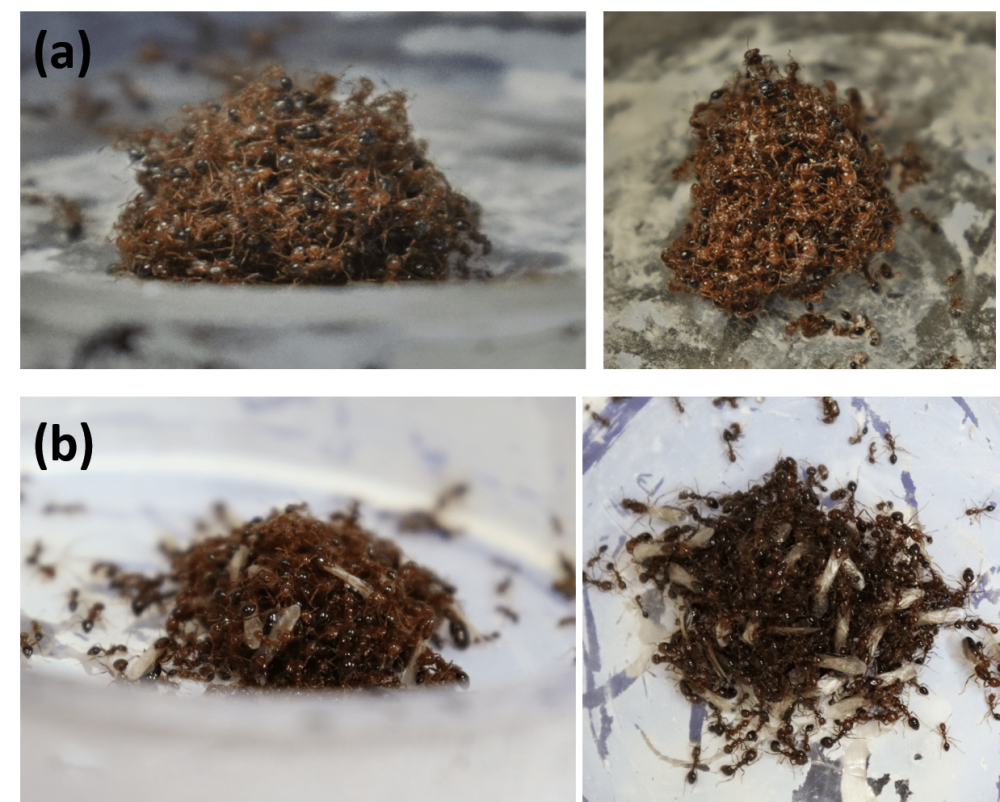Fire ant rafts enable these invertebrates to survive floods by aggregating in floating islands of living organisms. For a long time, their formation was thought to come down to something called the “Cheerios effect” – but new research has revealed that actually, pheromones could be a better fit as a trigger for the phenomenon.
The Cheerios effect describes the way that floating objects act as if they’re stuck together, and it’s all to do with how surface tension interacts with the air. It’s a nifty bit of science you’ve probably witnessed if you’ve eaten the cereal of the same name, as when your bowl is a little lacking in those delicious hoops, they seem to flock together.
The researchers put the Cheerios effect to the test using live and dead ants to observe how they behaved on dry and wet surfaces. The experiments revealed that the clumping effect we observe with cereal doesn’t match up to what we see in fire ants, dead or alive.
“By showing that placing the fire ants on a dry, shaking surface can prompt them to aggregate and [that] dead ants in water do not form rafts, we demonstrate that the clumping of cereals in milk, a.k.a. the Cheerios effect, is not a good analogy to explain the fire ant raft,” study author Tzay-Ming Hong of the Department of Physics at National Tsing Hua University told IFLScience.
The team instead suggests that pheromones could have a role to play in the way that fire ant rafts form, something they demonstrated by displacing a raft from water onto dry land, making it harder for pheromones to diffuse among the group.
“That it takes twice the aggregation time for the fire ants to disseminate after the ant raft has been relocated to a dry solid ground collaborates the supremacy of pheromones scenario over the Cheerios effect,” continued Hong. “The argument is that the relaxation time is constrained by the diffusion process for the pheromones, the messenger that calls on the fire ants to aggregate in times of danger, to disperse so that the intoxicated ants can finally sober up and leave.”
Fire ants (Solenopsis invicta) – so named for the burning bites they deliver – were the focus of a 2021 paper that found the rafts consist of layers, with a structural network of interconnected ants supporting a top layer of freely moving ants. The movement of structural ants to the free ant layer, and vice versa, means the raft isn’t stationary, but perpetually contracting as everyone on board shuffles about, enabling constant adjustments that can keep the raft stable.
This new study has established that by having ants available to plug in holes, the fire ant rafts can have a zero Poisson’s ratio, which means they maintain their width and height even when stretched and squeezed. This is of particular interest from a biomimetics perspective – a field of science that borrows ideas from nature to innovate new technologies and materials – as the ability to stretch without getting thinner is typically only seen in objects with very specific and complex shapes.

The ant rafts formed by vertical (a,b) and horizontal (c,d) shaking on dry land.
Image courtesy of Tzay-Ming Hong
Exactly how the dynamics of the raft were playing out was something researchers on the 2021 paper weren’t sure of, but this new research highlights that we may have been downplaying the role of pheromones in favor of the Cheerios effect all this time.
“Pheromones were established to be essential for communication among ants by E. O. Wilson. We believe that millennia of evolution helped the fire ants to develop and secrete special chemical compounds as a cue for members to aggregate in times of imminent danger (to survive the flooding rain.),” added Hong.
“What’s interesting is that we found the alarm can be equally set off by shaking the fire ants. In other words, the formation of ant rafts does not necessarily require water or the Cheerios effect.”
Back on the shelf with you, Cheerios effect.
The study is published in the journal Physical Review E.
Source Link: Fire Ants May Not Use The “Cheerios Effect” To Make Rafts After All